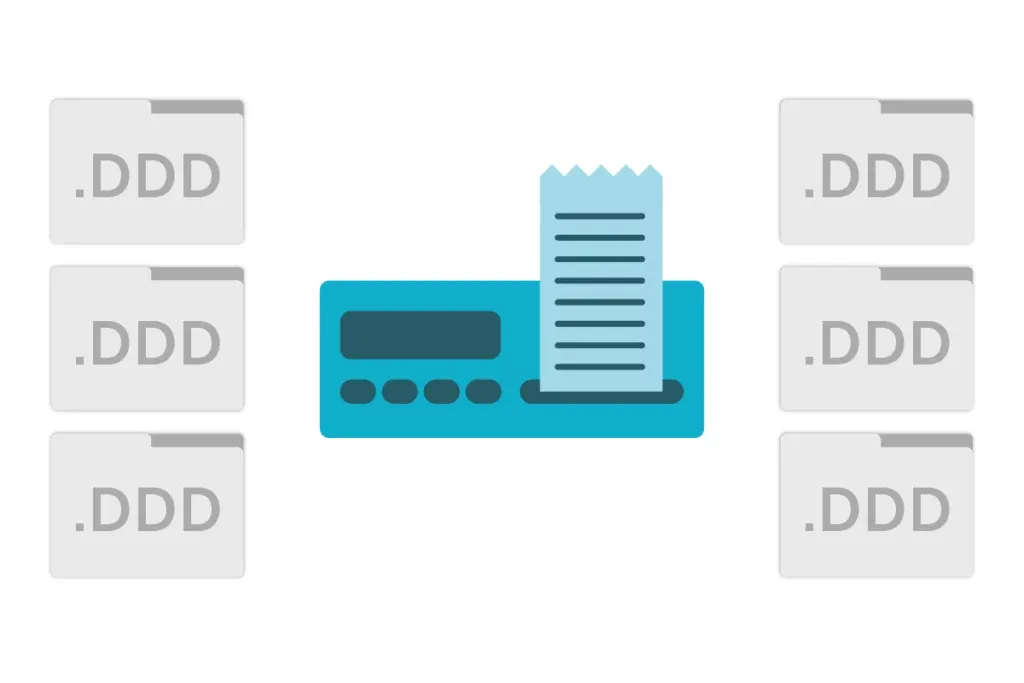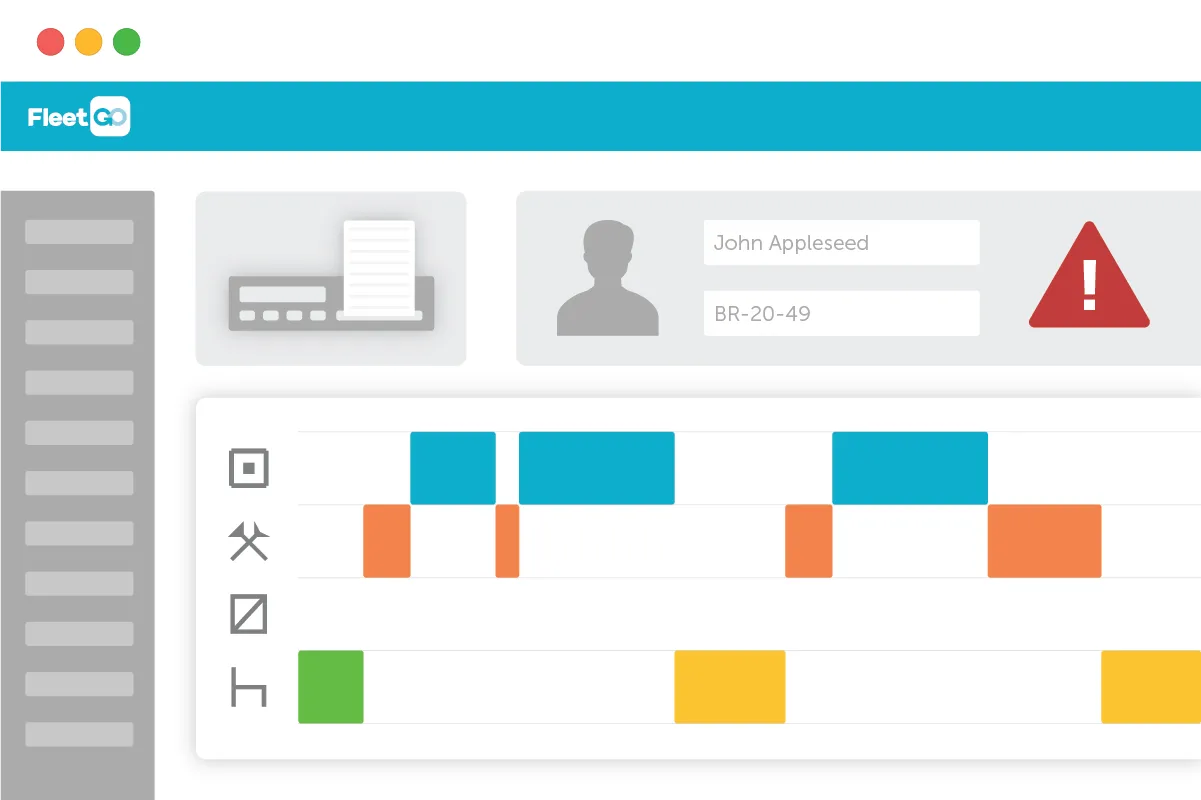Tachograph files, also known as digital tachograph files, are essential for the transport industry. They contain electronic records of a vehicle’s speed, distance, and driving time and are created by digital tachographs installed in commercial vehicles. This post will explore the importance of tachograph files, with a focus on the DDD file format.
What Are Tachograph Files?
Tachograph files play a crucial role in ensuring that drivers comply with regulations relating to working hours and rest periods. They are particularly important for companies that operate and track large fleets of commercial vehicles, as non-compliance with these regulations can result in hefty fines and legal penalties. Tachograph files are used to monitor compliance and provide evidence of compliance in the event of an inspection or investigation.

Never risk any tachograph fines again!
Get started with analysing your tachograph files with the FleetGO all-in-one tacho solution. Never miss an infringement again!
Chances of getting invested are higher than ever!

What Are DDD Files?
One of the most common file formats for tachograph files is the DDD file format. DDD files contain all of the data recorded by the digital tachograph, including information about driving time, breaks, rest periods, and speed. These files can be read using specialist software, which allows operators to view and analyse the data they contain. Access to these files is typically restricted to those with an appropriate card, such as a company card or a control card. Company cards can also lock certain information in the tachograph unit.
How Are DDD Files Used?
DDD files are typically downloaded from the digital tachograph at regular intervals — usually every 28 days — and are stored securely for a minimum of one year. In the event of an inspection or investigation, these files can be easily accessed to provide evidence of compliance with regulations. DDD files can also be used to improve driver safety and efficiency by analysing the data contained within them. For example, if a driver is regularly braking too harshly, steps can be taken to correct that behaviour.
Tampering With Tachograph Files
It is essential that tachograph files are accurately recorded, securely stored, and not tampered with. Tampering with tachograph files is a serious offence and can result in fines and legal action. The data contained in these files is considered to be a legal record of a driver’s activities, and as such, it is essential that it is accurately recorded and stored.
Improving Driver Safety and Efficiency
In addition to ensuring compliance with regulations, tachograph files can also be used to improve driver safety and efficiency. By analysing the data contained in these files, transport operators can identify areas where drivers may need additional training or support. It can also identify opportunities to optimise routes and schedules to reduce driving time and fuel consumption.
Conclusion
Tachograph DDD files are a critical component of how driving information is recorded and a crucial part of the transport industry as a whole. They play a vital role in ensuring regulation compliance, improving driver safety and efficiency, and providing a legal record of a driver’s activities. As such, it is essential that they are accurately recorded, securely stored, and easily accessible. Failure to comply with these regulations can result in significant fines and legal action, making it essential for transport operators to prioritise the accurate recording and storage of tachograph files.
Sources:
Disclaimer
This content is provided for informational purposes only and is not meant to be an endorsement or representation by FleetGO.com or any other party. This information may contain inaccuracies or typographical errors, despite our efforts to ensure accuracy. FleetGO.com accepts no responsibility or liability for any errors or omissions, and is not responsible for the contents of any linked website or any link contained in a linked website. Please refer to our full disclaimer for more details.


